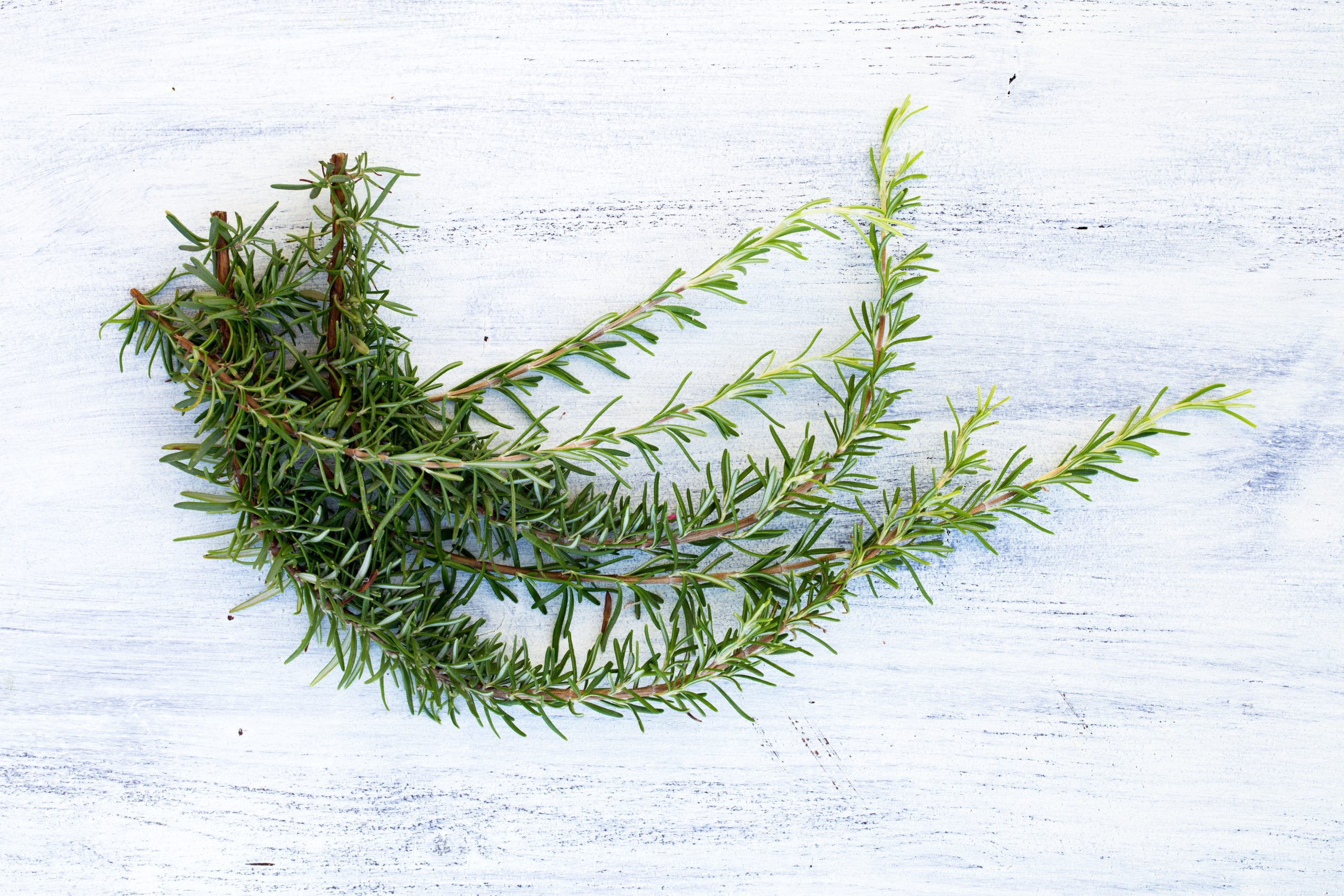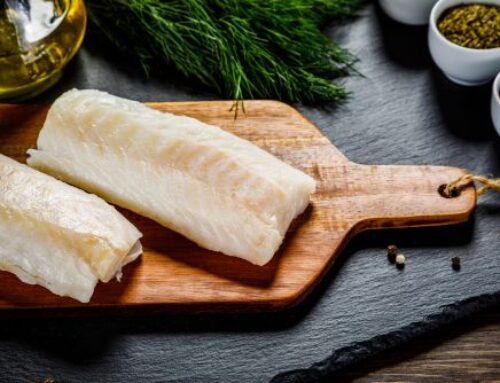Plant Part Used
The essential oil is obtained by steam distillation of the fresh flowering tops.
– The main chemical components of rosemary essential oil include a-pinene, borneol, b-pinene, camphor, bornyl acetate, camphene, 1,8-cineole, and limonene.
Rosemary essential oil is one of the most popular and powerful oils distilled and used. It is extracted from the herb rosemary (Rosmarinus officinalis). It is native to Mediterranean regions and has blue or purple flowers that give it its unique beauty. For thousands of years, rosemary has been used to soothe digestive issues, improve memory, and relieve muscle pains and aches. Rosemary essential oil is clarifying, invigorating and warming and the smell is strong and woodsy. It is a good remedy for mental fatigue and increases alertness, improves memory and acts as an all-around brain tonic. It is also useful for respiratory issues and makes a good expectorant/decongestant; a few drops on a tissue is great to open the lungs. Inhaling rosemary oil is said to lift your spirits. Emotionally and spiritually, rosemary says, “hey wake up, pay attention.” If you are a student or working late, it is one of the best oils to diffuse as it increases concentration and helps in studying efficiently. Choose rosemary – because it has the ability to revive the body, mind and spirit!
Recipes
Diffuser Blend
7 drops rosemary – Rosmarinus officinalis
3 drops lemon – Citrus lemon
4 drops lavender – Lavandula angustifolia
In diffuser, combine essential oils. Follow diffuser directions.
Brightening Aromatic Spray
Use this spray to invigorate and clear your mind in the morning or whenever you need a pick-me-up. The blend of essential oils is not only cephalic, but immune supporting too; consider diffusing the essential oil blend to clear the air and your mind.
2 ounce glass or PET bottle with spray top distilled water
3 drops rosemary ct cineole
(Rosmarinus officinalis ct 1,8 cineole)
8 drops scots pine – Pinus sylvestris
6 drops juniper berry – Juniperus communis
6 drops Black pepper – Piper nigrum
6 drops Lemon – Citrus limon
How to make: Ensure the bottle is new and/or sterilized. Add the essential oils to the bottle followed by the distilled water. Secure the spray top to the bottle and label appropriately.
How to use: Shake vigorously each time before using to disperse the essential oils. Use daily or as needed. Keep your eyes closed when misting your face.
Rosemary and Lemon
Reach for this blend when you need an instant pick-me up!
2 drops rosemary – Rosmarinus officinalis
3 drops lemon – Citrus lemon
Rosemary and Lavender
Reach for this blend if you are having trouble living in the moment. Find contentment!
3 drops cypress – Cupressus sempervirens
4 drops lavender – Lavandula angustifolia
Hair and Scalp Oil
Rosemary is one of the best essential oils for the hair.
4 ounces jojoba oil
22 drops rosemary – Rosmarinus officinalis
22 drops tea tree – Melaleuca alternifolia
Blend ingredients and store in a bottle. To use, add a small amount into the palm of your hand and massage vigorously into scalp and hair. Allow to penetrate your scalp for 5-7 minutes.
Fun Facts
– It is one of the most common aromatic wild plants of the Mediterranean landscape, especially in rocky limestone hillsides adjoining the seaside.
– In Shakespeare’s Hamlet, Ophelia says, “There’s rosemary, that’s for remembrance.”
– At weddings, boughs of rosemary were carried as good luck for the new couple.
– Rosemary branches were placed on the floors of medieval homes to combat diseases during the “black plague.”
Safety
– Do not take any essential oils internally.
– Do not use essential oils undiluted on skin.
– Test diluted essential oils on skin area before general use.
– Use photosensitizing essential oils cautiously. (i.e. lemon, lime, grapefruit)
– Consult with a health practitioner before use if pregnant, nursing or suffering from
any medical condition, or taking medication.
– Keep essential oils out of reach of children
– Do not use essential oils internally.
– Less is more – don’t overuse essential oils.
References (3)
- Valerie Ann Worwood, The Complete Book of Essential Oils and Aromatherapy, 1991
- herbinfosite.com/herb-information/herb-profiles-rosemary/
- Keville, K. Aromatherapy, A Complete Guide to the Healing Art, The Crossing press, USA, 1995
Aromatherapy Thymes magazine at barnesandnoble.com
http://instagram.com/aromatherapythymesmag





Leave A Comment